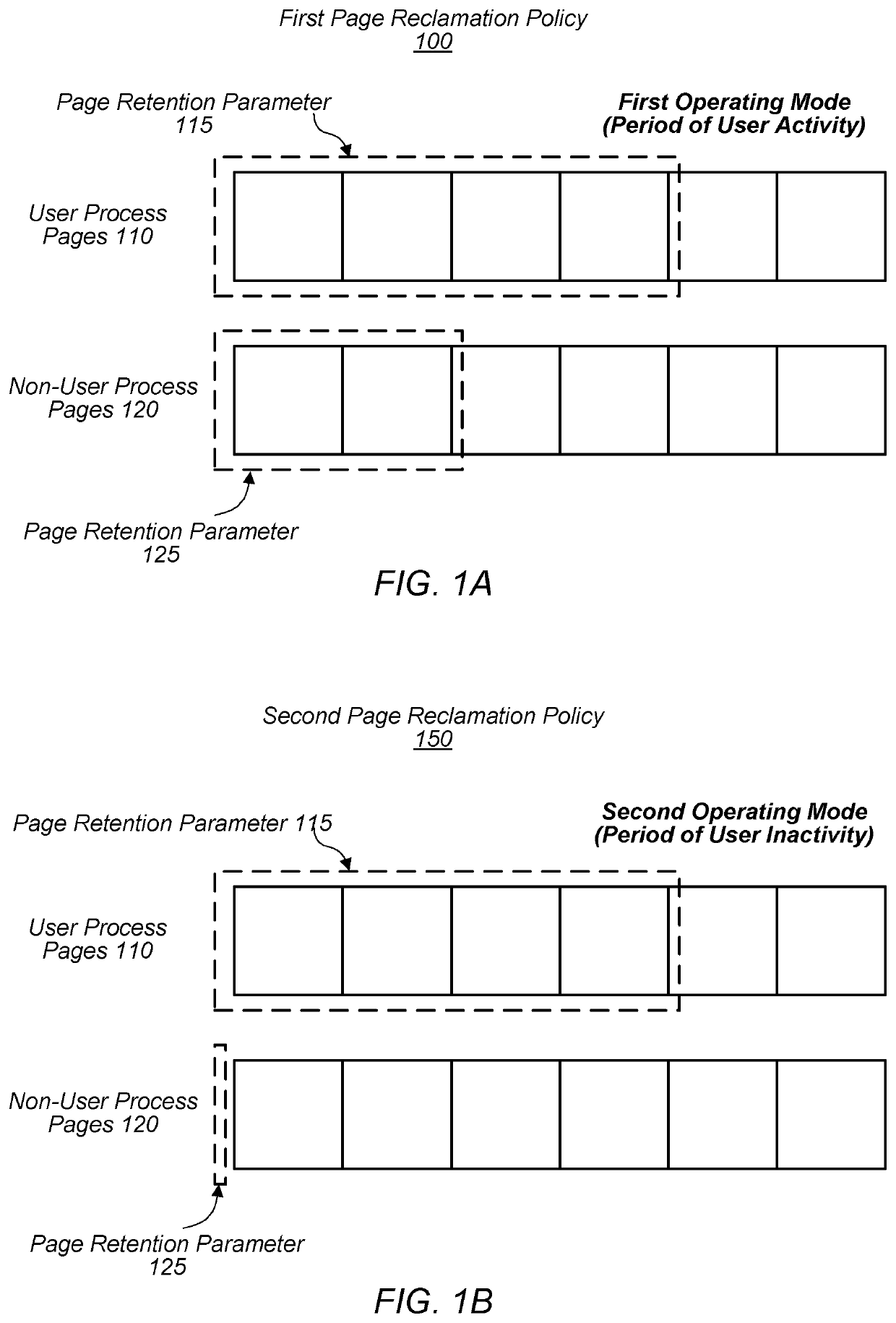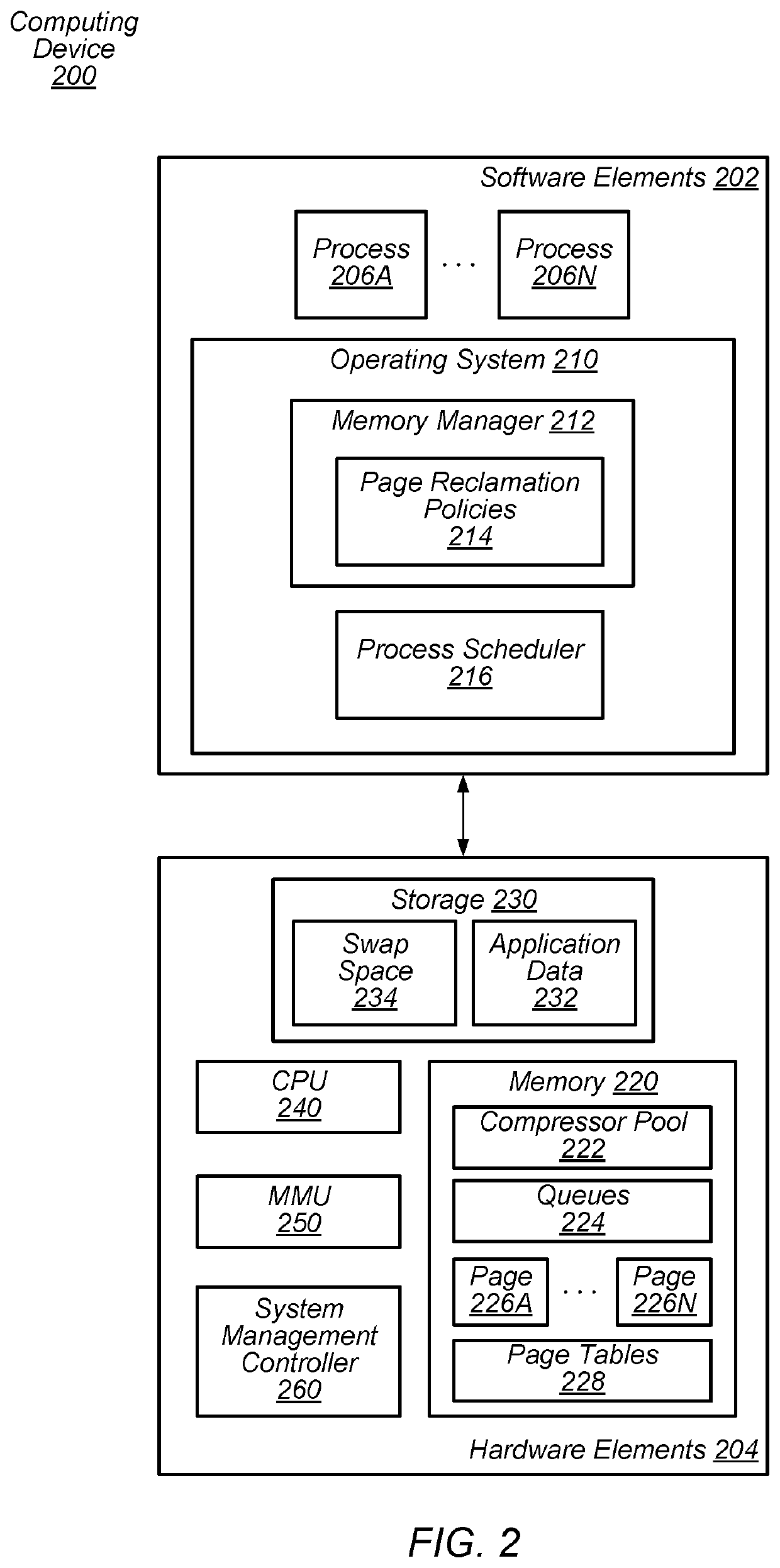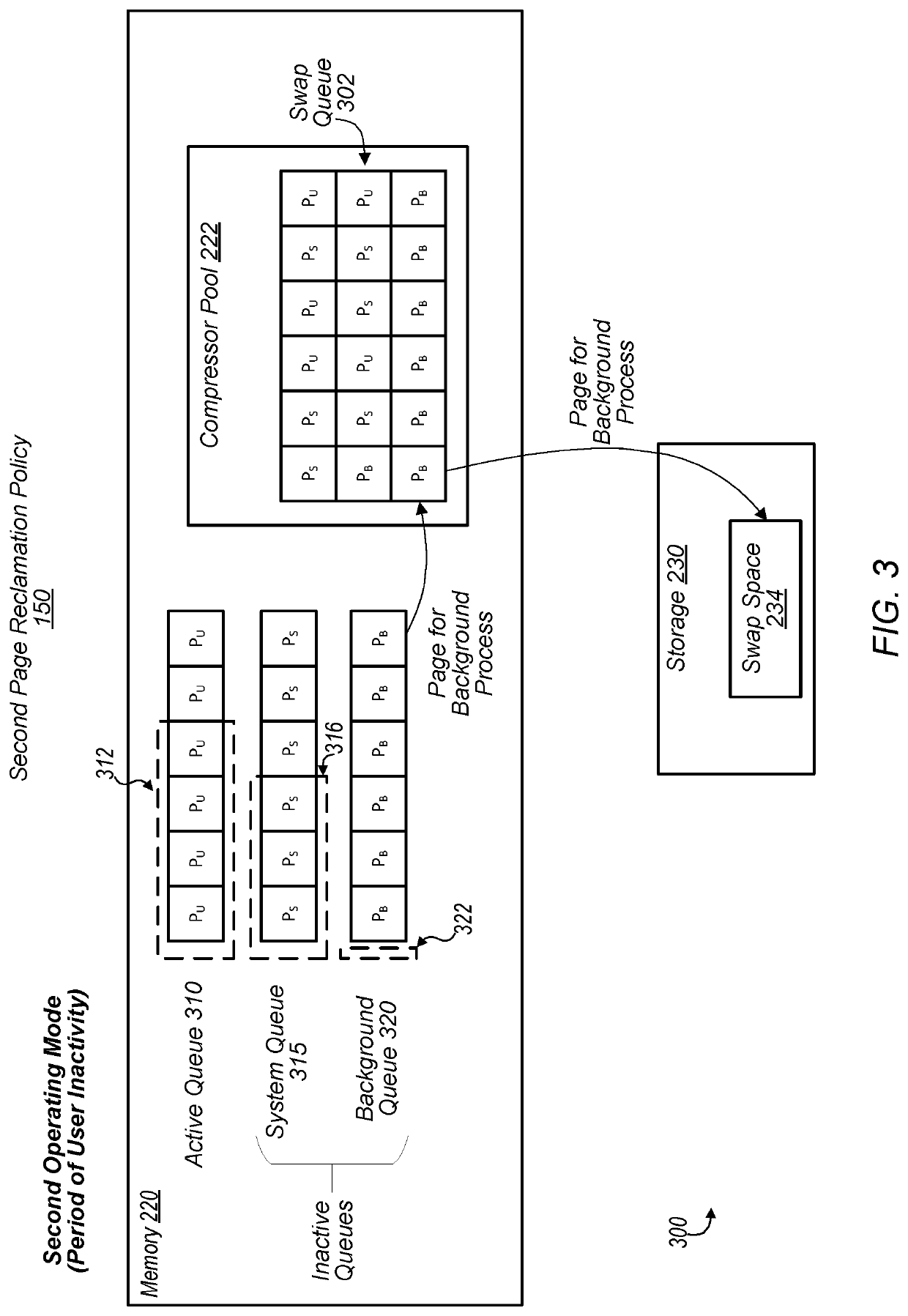Memory page reclamation in a user idle mode
a memory page and idle mode technology, applied in the field of virtual memory page reclamation, can solve the problems of page faults, significant amount of time for page maintenance, page faults may occur, etc., and achieve the effect of reducing perturbation and restoring the performance of previous work
- Summary
- Abstract
- Description
- Claims
- Application Information
AI Technical Summary
Benefits of technology
Problems solved by technology
Method used
Image
Examples
Embodiment Construction
[0016]During operation, a computing device may perform various types of processes concurrently, including both user processes and non-user processes. Further, modern computing devices typically implement a virtual memory system in which main memory is used as a cache to store data (e.g., data for user and non-user processes) from secondary storage. As such, in performing the various processes, the computing device stores pages of data for these processes in main memory. Once all available pages in main memory are in use, the operating system will typically need to select pages to evict from main memory to make room for newly requested data. An operating system may implement various page reclamation policies in determining which pages to evict from main memory. As used herein, the term “page reclamation policy” refers to an implementation that determines the manner in which pages are selected for eviction from main memory. In some embodiments, for example, a page reclamation policy m...
PUM
 Login to View More
Login to View More Abstract
Description
Claims
Application Information
 Login to View More
Login to View More - R&D
- Intellectual Property
- Life Sciences
- Materials
- Tech Scout
- Unparalleled Data Quality
- Higher Quality Content
- 60% Fewer Hallucinations
Browse by: Latest US Patents, China's latest patents, Technical Efficacy Thesaurus, Application Domain, Technology Topic, Popular Technical Reports.
© 2025 PatSnap. All rights reserved.Legal|Privacy policy|Modern Slavery Act Transparency Statement|Sitemap|About US| Contact US: help@patsnap.com



